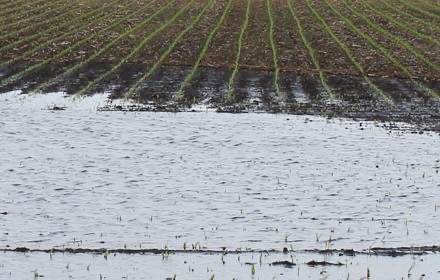Too Much of a Good Thing?
go.ncsu.edu/readext?1082862
en Español / em Português
El inglés es el idioma de control de esta página. En la medida en que haya algún conflicto entre la traducción al inglés y la traducción, el inglés prevalece.
Al hacer clic en el enlace de traducción se activa un servicio de traducción gratuito para convertir la página al español. Al igual que con cualquier traducción por Internet, la conversión no es sensible al contexto y puede que no traduzca el texto en su significado original. NC State Extension no garantiza la exactitud del texto traducido. Por favor, tenga en cuenta que algunas aplicaciones y/o servicios pueden no funcionar como se espera cuando se traducen.
Português
Inglês é o idioma de controle desta página. Na medida que haja algum conflito entre o texto original em Inglês e a tradução, o Inglês prevalece.
Ao clicar no link de tradução, um serviço gratuito de tradução será ativado para converter a página para o Português. Como em qualquer tradução pela internet, a conversão não é sensivel ao contexto e pode não ocorrer a tradução para o significado orginal. O serviço de Extensão da Carolina do Norte (NC State Extension) não garante a exatidão do texto traduzido. Por favor, observe que algumas funções ou serviços podem não funcionar como esperado após a tradução.
English
English is the controlling language of this page. To the extent there is any conflict between the English text and the translation, English controls.
Clicking on the translation link activates a free translation service to convert the page to Spanish. As with any Internet translation, the conversion is not context-sensitive and may not translate the text to its original meaning. NC State Extension does not guarantee the accuracy of the translated text. Please note that some applications and/or services may not function as expected when translated.
Collapse ▲I know I sound like a pessimist only speaking of the bad in a good growing season, but this is the reality for many farmers here in Sampson County. This growing season has been the exact opposite of last growing season. I’m sure everyone remembers the crops withering away in the fields because it just didn’t rain. This growing season can be described as too much of a good thing for many. We have gotten timely rains. Some areas have received too much, resulting in some drowned crops and making some farmers replant. Overall, the crops here in Sampson County look good but there are always challenges in agriculture, whether it’s a good year or a bad one.
The corn crop is looking great and there aren’t many crops that look truly bad aside from the fields that tend to flood and drown crops. In corn particularly, I have seen some foliar diseases due to high moisture and temperatures recently but nothing detrimental. I am concerned that if it stays wet like it has been, there could be a flush of ear rot like we saw late in the season last year.
A bigger problem for most crops has been nutrient deficiencies. I believe this stems from a combination of shallow roots and nutrient leaching. With timely rains, there isn’t a lot of stress on your plants. Good, right? Lack of stress can cause the plant roots to be shorter since they haven’t had to go looking further down in the soil profile for water or nutrients. This isn’t really a problem until you have the inevitable dry spell and hot temperatures like we saw a few weeks back. Plants get stressed and only have a limited root system to get resources that they need, exacerbating the stress. The other issue is nutrient leaching. With so much water going through the soil profile, nutrient molecules get taken along for the ride and right out of the plant root zone.
The biggest issue with so much rain is farmers not being able to get into their fields. Weeds and insects don’t take time off in the rain and missed pesticide applications have resulted in a flush of weeds, foliar disease, and insect damage. Insect damage could mean trouble for crop quality. Tobacco is one crop where I have seen some instances of insects lessening quality of the leaves. The same can be said for foliar diseases–most prevalent this year would be target spot. Weeds, for the most part, aren’t going to outcompete a healthy corn crop but they can hinder harvest efficiency. Morning glory is the first example that comes to mind. Weeds will also be a problem next season if they are allowed to go to seed and if conditions don’t change where a sprayer can enter a field, they might go to seed.
In agriculture it’s one thing after another. Just because we got more rain this growing season, doesn’t mean that all of the problems in the agriculture community are magically solved. With each season comes a new set of obstacles to overcome. The farming community of Sampson County is resilient and will take it in stride and hope for a good crop next year as well.




